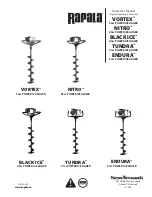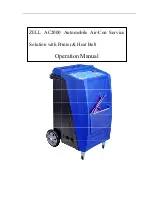
installing disposables
chapter 6
6-3
6-2
Caution
•
Secure the Shunt Bypass Line tubing connection with stay straps.
•
The CDI Shunt Sensor can only be connected to the Shunt Bypass Line in one
direction. The Shunt Bypass Line should be oriented in the bypass circuit to the
desired placement of the cable-head and cable direction.
•
The Shunt Bypass Line should have the CDI Shunt Sensor side down in the
circuit, to prevent air trapping in the CDI Shunt Sensor.
•
The CDI H/S Cuvette contains an optical window that provides a means of
consistent optical connection between the optical Terumo CDI H/S Probe and
the CDI H/S Cuvette. When the CDI H/S Cuvette is inserted into the circuit,
the optical window should be facing down, so that the CDI H/S Probe, when
attached, will be on the lower side of the CDI H/S Cuvette. This minimizes
interference from intermittent air bubbles in the line.
•
End caps are provided (on the single sterile assemblies) at each end of the
Shunt Bypass Line and the CDI H/S Cuvette to protect the blood pathways
from contamination prior to insertion into the tubing. The Shunt Bypass
Line and CDI H/S Cuvette remain sterile as long as the package is unopened
and undamaged.
Installing a CDI Shunt Sensor
The heparin-coated, sterile Terumo CDI Shunt Sensors, Model CDI510H, are intended for
placement into shunt lines, purge lines, sampling lines, Shunt Bypass Lines or any similar
line that has constant blood flow.
Warning
• The CDI Shunt Sensor is supplied sterile. Aseptic technique must be used
when inserting it into the extracorporeal circuit to ensure that the blood-
contacting surfaces remain sterile.
• Avoid touching the optical surfaces of the cable-head and shunt sensor(s).
Fingerprints on these surfaces can reduce the accuracy of the system.
Caution
•
The CDI Shunt Sensor should be placed distal to a purge line one-way valve to
avoid possible back flow of air.
•
Terumo recommends that you not connect the CDI Shunt Sensor directly onto
another rigid plastic piece, such as a manifold, without extra support for the
shunt sensor. Connecting the unsupported CDI Shunt Sensor directly to another
rigid plastic piece may make the unsupported piece or the CDI Shunt Sensor
susceptible to breakage. Terumo recommends having a length of pliable tubing
between a supported CDI Shunt Sensor and any other rigid plastic part.
Note:
The CDI Shunt Sensor can be placed in the shunt/purge line at any time during
priming or bypass, as long as there is fluid in the circuit. You must stop the fluid flow up-
stream of the sensor before insertion to avoid loss of fluid.
Note:
The sensor is bidirectional. Blood can flow through it in either direction.
Summary of Contents for CDI 550
Page 29: ...chapter 2 2 6 This page is intentionally left blank...
Page 39: ...chapter 3 3 10 This page is intentionally left blank...
Page 53: ...chapter 4 4 14 This page is intentionally left blank...
Page 85: ...chapter 8 8 4 This page is intentionally left blank...
Page 109: ...chapter 9 9 24 This page is intentionally left blank...
Page 113: ...chapter 10 10 4 This page is intentionally left blank...
Page 164: ...patent information F 1 Patent Information U S Patents 5 296 381 5 508 509 5 591 400...
Page 165: ...appendix f F 2 This page is intentionally left blank...
Page 169: ...appendix g G 4 This page is intentionally left blank...
















































